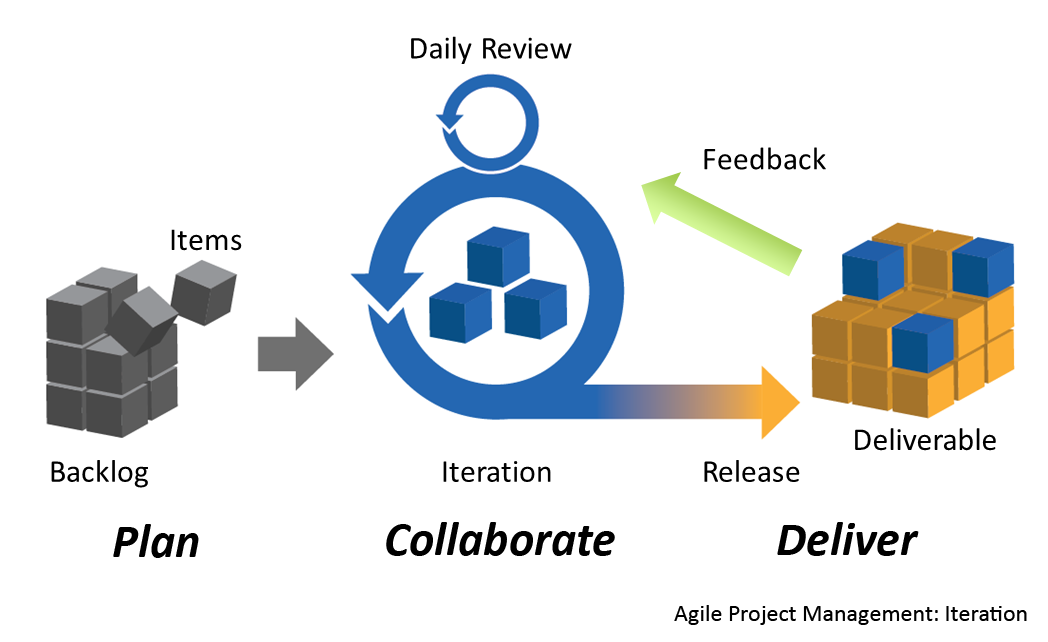
In 2001, a group got together and formulated a new software development methodology called Agile. The new methodology was to make the practice of developing software more effective. Agile owes it popularity to the fact that it has been proven to increase customer collaboration, respond to change, deliver high-quality products frequently ensuring value. Agile makes it easy to take such large strides compared to other methodologies because “the goal, instead, is to simply do whatever’s necessary at any moment to satisfy a customer’s requests, replacing documentation with in-person meetings and replacing siloed functions with unified, self-organizing project teams” (Huston, 2014). 
At the heart of the agile methodology is the user story. The user story acts as a place for stakeholder to communicate product requirements to the developers. The user story should of course contain a title and the target audience. In addition, there is a cadence that needs to be followed when creating a user story. It is “As a <user or persona> I want to <take this action> So that <I get this benefit>” (Ambler & Holitza, 2012).
Furthermore, the user story needs to include validation steps so the developer can prove to the product owner the work was done correctly. The validation steps also have a cadence; “When I <take this action>, this happens <description of action>” (Ambler & Holitza, 2012). These user stories are later prioritized, rated for difficulty and have hours put against them. This provides the avenue for the user story to be placed into a product backlog, worked on in a sprint and into a product that is delivered to the customer.
How does the agile development methodology differ from the other development (testing) methodologies?
One phase that Agile has been developed to improve is the testing phase. Let’s compare agile to one of its predecessors, Waterfall. Waterfall is based on six rigid phases:
- Requirements
- Design
- Development
- Integration
- Testing
- Deployment
As you can see, the testing phase is in the fifth phase, near the end. The rigidness of the Waterfall methodology creates a problem when testing commences. If a bug is found it can take more time for the programmer to fix the bug because it may be a long time since that part of the program was last touched. It is “not only harder for the developer to find and fix but also can potentially trigger the need for major design changes toward the end of the project” (Ambler & Holitza, 2012). On the other hand, Agile does testing within every sprint cycle. Positioning the testing phase closer to the time the code was written produces faster response to bugs.
Click here to view the Criterion Report
References
Ambler, S. W., & Holitza, M. (2012). Agile For Dummies IBM Limited Edition. Hoboken: John Wiley & Sons, Inc.
Huston, T. (2014). What Is Agile Testing? Retrieved from SmartBear Software: http://smartbear.com/products/qa-tools/what-is-agile-testing/
Daily Review Image – http://en.wikipedia.org/wiki/Iterative_and_incremental_development
User or Customer Image – http://www.romanpichler.com/blog/10-tips-writing-good-user-stories

This is a very well organized and informative article. This shows the writer have a good understanding of Agile and how each step of Agile is different or better than Waterfall process.
The only improvement that needs to be made here is how the paragraph is formatted. The picture is nice but it made the words go around the picture and there is a big gap between paragraphs, which could cause confusion for reader.
I agree, the formatting needs work. It will be much better in the final copy. Thanks Huy.
A very in depth and informative article .A very well written introduction which gives a proper foundation for the rest of the article. Especially, the differentiation between agile and waterfall model is aptly put. The images match the article perfectly but their position can be changed for better flow. The article would require a little bit of polishing around the grammar and paragraphs .Except for that, the article is very informative and the clarity on the topic makes it an interesting read.